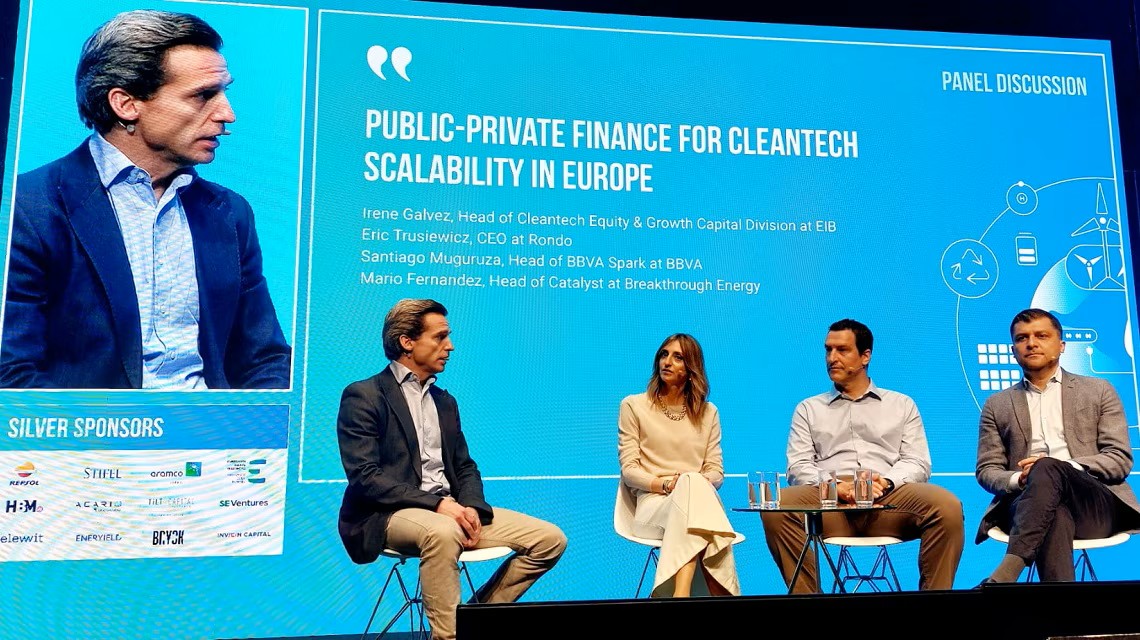BBVA Open Innovation’s mission is to incorporate innovation from the wider ecosystem in order to address the needs of the bank’s various business units. In this article, Marta Viñas Sanchez, Senior Open Innovation Manager, explains how BBVA’s “Internal Collider” programme turns vision into reality.
Engagement with startups is clearly central to BBVA’s Open Innovation mission. But how does it work in practice? How do you get started?
We don’t want to engage with startups just for the sake of it; it’s important that any collaboration stems from a clear opportunity for the startup to support BBVA in addressing a specific commercial or strategic challenge. So first of all we have to identify those opportunities. We do that by inviting each business unit in the bank to suggest opportunities based on their needs. Last year, 485 opportunities were identified this way.
That’s an incredible number of opportunities. How do you choose which ones to pursue?
We implement a robust, multi-stage filtering process to ensure that the bank’s time and energy is spent working on the opportunities that are most strategically important and most feasibly addressed.
First, the opportunities are prioritised based on the scale and urgency of the need of the business unit that identified them. This is also influenced by which of the opportunities align most closely with BBVA’s bank-wide strategic projects that are of most critical importance to the bank at the corporate level. Then, opportunities are prioritised according to their cross-market potential – something that can benefit the bank and its customers in more than one territory is more likely to make the cut.
The next layer of filtering is checking the opportunities for feasibility, and ensuring that they do not overlap with existing projects being undertaken by internal teams such as solutions-architecture or risk. Once this filtering has been done, the opportunities that come out as top priorities are presented back to the relevant business units – of the 491 opportunities identified last year, just 39 made it to this stage. It is only at this point that BBVA starts looking to match startups to opportunities.
Once it gets to that stage, how does BBVA identify the startups that might be able to address those opportunities?
BBVA has a network of scouts that work to identify potentially relevant startups. Some of these are experienced individuals within the startup ecosystem in different markets, while we also have close relationships with a number of incubators, accelerators, and other innovation hubs that make recommendations and refer promising startups to us – these include F6S, Finnovista, Early Metrics, 500 Startups, and others.
The startups that get recommended to us by the scouting network are initially filtered by their capabilities – which startups might have the technology, experience, and expertise to create solutions that address specific opportunities? The most relevant startups are then examined and vetted by the business units themselves, before being put forward to the Connection Festival.
What is the Connection Festival?
This is where the different business units get to dig deeper into the capabilities of the startups, to pick out the very best that they want to collaborate with on addressing opportunities.
Over two to three weeks, up to five startups will have multimedia pitching sessions with the relevant business unit leaders to sell their business and their ideas for addressing a specific opportunity, and to ask and answer questions. The business units then have two days to decide whether they will take the next step and start to frame a collaboration with a particular startup. If they pick a startup, they continue the conversation to start defining an idea for a pilot or proof-of-concept project. At this point the Internal Collider team also aligns projects with those being created and accelerated through the FastTrack program.
What is FastTrack?
FastTrack is a multi-stage process designed to accelerate collaborations towards a successful outcome. It begins with the specification phase – what information is needed to define a project? Then the project enters the definition phase – what should the project look like? Then there is a review of what resources are available to implement the project, before the implementation stage sees the framework and roadmap of the project put in place, and finally in the execution phase the project happens.
BBVA is refining this process, looking to bring greater consistency to the expectations in different markets and business units when it comes to what they want and need to know about a startup before beginning to frame a pilot or proof-of-concept.
What benefit do you see BBVA Open Innovation and the Internal Collider program having beyond the bank?
Going back to the first question, we don’t want to engage with startups just for the sake of it. Of course, where possible we want these “collisions” to have positive outcomes for BBVA in terms of the products and services we are able to offer our customers. But it’s also about more than that – it’s about being a proactive and supportive catalyst for fintech ecosystems around the world, whether they are in established markets or ones where the fintech revolution is only just starting to take off.
We know that some of the change that is needed in banking and financial services can’t be achieved by banks alone – that’s why we need flourishing ecosystems of startups all around the world dedicated to addressing specific challenges. And building those communities takes more than just money – it’s about building support networks, bringing people together, and showing that big players in the market are open to helping develop and adopt new ideas. With 429 collisions currently in progress, plus the wider activity of Open Innovation through Open Talent, Open Spaces, and Open Marketplace, that is what we are trying to achieve.



